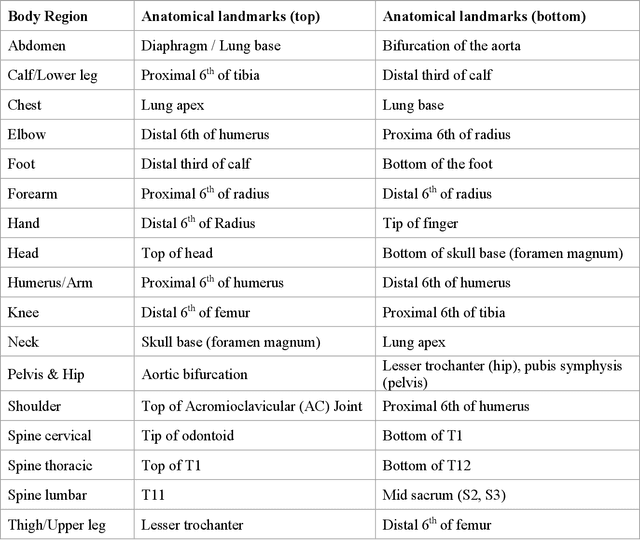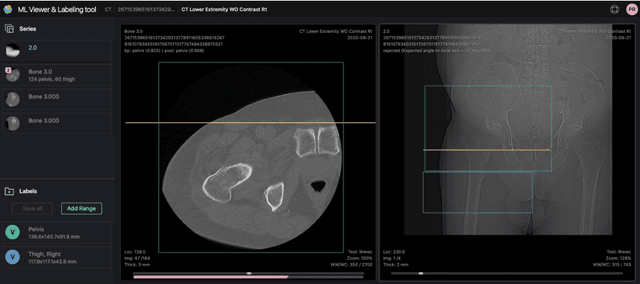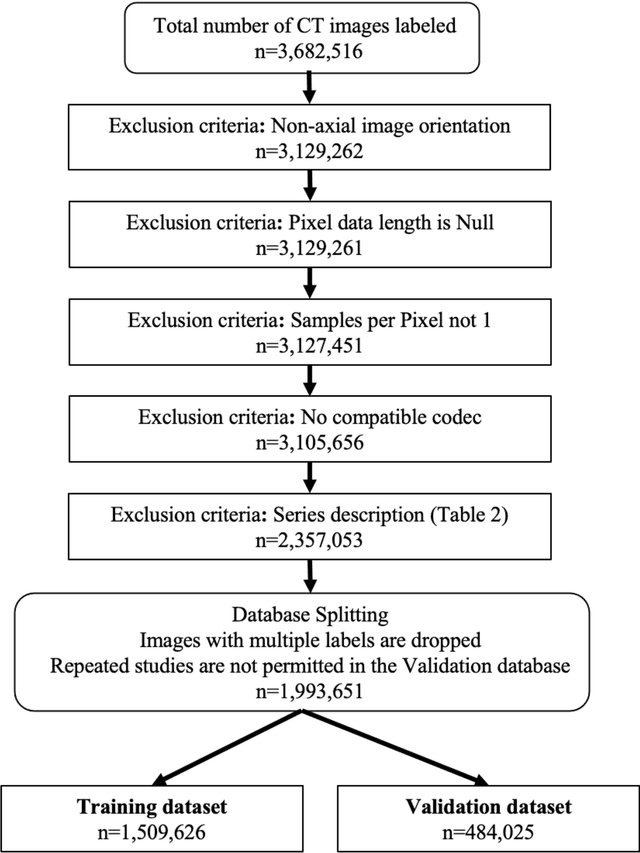Deep Learning Body Region Classification of MRI and CT examinations
Paper and Code
Apr 28, 2021



Standardized body region labelling of individual images provides data that can improve human and computer use of medical images. A CNN-based classifier was developed to identify body regions in CT and MRI. 17 CT (18 MRI) body regions covering the entire human body were defined for the classification task. Three retrospective databases were built for the AI model training, validation, and testing, with a balanced distribution of studies per body region. The test databases originated from a different healthcare network. Accuracy, recall and precision of the classifier was evaluated for patient age, patient gender, institution, scanner manufacturer, contrast, slice thickness, MRI sequence, and CT kernel. The data included a retrospective cohort of 2,934 anonymized CT cases (training: 1,804 studies, validation: 602 studies, test: 528 studies) and 3,185 anonymized MRI cases (training: 1,911 studies, validation: 636 studies, test: 638 studies). 27 institutions from primary care hospitals, community hospitals and imaging centers contributed to the test datasets. The data included cases of all genders in equal proportions and subjects aged from a few months old to +90 years old. An image-level prediction accuracy of 91.9% (90.2 - 92.1) for CT, and 94.2% (92.0 - 95.6) for MRI was achieved. The classification results were robust across all body regions and confounding factors. Due to limited data, performance results for subjects under 10 years-old could not be reliably evaluated. We show that deep learning models can classify CT and MRI images by body region including lower and upper extremities with high accuracy.
 Add to Chrome
Add to Chrome Add to Firefox
Add to Firefox Add to Edge
Add to Edge